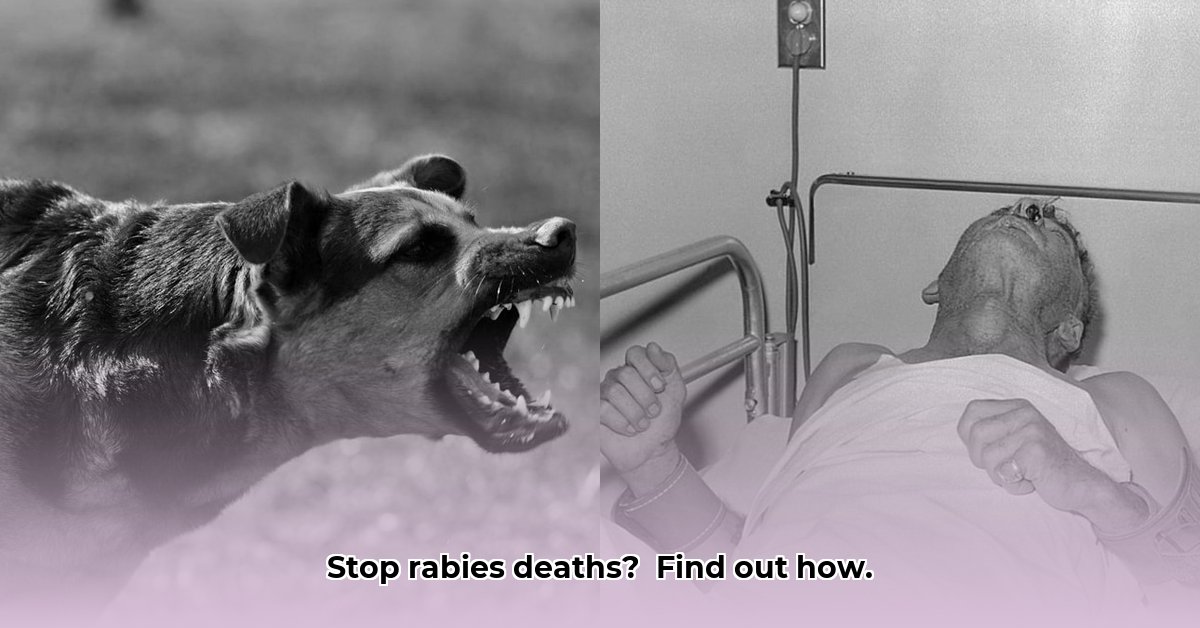
Understanding Rabies: A Silent Killer
Rabies, 'n baie ernstige siekte, (a very serious illness) is a viral infection that attacks the nervous system, ultimately leading to death if left untreated. Every year, thousands die from this preventable disease, a stark reminder of the importance of awareness and swift action. Did you know that over 99% of human rabies deaths occur in Asia and Africa? This highlights the urgent need for preventative measures in these regions.
How Rabies Spreads: More Than Just Bites
The rabies virus is typically transmitted through the saliva of an infected animal, most commonly through a bite. However, contamination of broken skin or mucous membranes with infected saliva can also lead to transmission. Wild animals like bats, foxes, and mongooses, as well as domestic animals like dogs and cats, can carry the virus. This underscores the importance of cautious interaction with all animals, especially those exhibiting unusual behaviour.
Who's at Risk? Understanding the Vulnerable
While anyone can contract rabies, certain groups are at higher risk. Children, due to their greater likelihood of interacting with animals, are particularly vulnerable. Professionals working with animals, including veterinarians and animal control officers, also face higher exposure risks. Individuals living in rural areas or regions with inadequate animal control measures are also at increased risk. Are you taking the necessary precautions, considering your specific circumstances?
Preventing Rabies: Your Shield Against the Virus
Prevention is paramount. Here are vital steps to protect yourself and your community:
Vaccinate Your Pets: Regular rabies vaccinations for your pets are a crucial first line of defence. It's a simple, yet highly effect measure that protects both your furry friends and your family.
Avoid Contact with Stray Animals: Never approach or handle unfamiliar animals. Admire them from a distance, but maintain a safe separation to minimise any potential risks.
Wildlife: Observe, Don't Interact: While appreciating wildlife from afar is encouraged, direct contact should be strictly avoided. Never attempt to handle or rescue wild animals yourself; contact animal control or a wildlife rescue organization instead.
Wound Care is Crucial: If bitten or scratched by any animal, no matter how small, immediately wash the wound thoroughly with soap and water. Seek medical attention without delay. Prompt treatment significantly increases the likelihood of a positive outcome.
Know the Symptoms: Early symptoms of rabies can mimic the flu, including fever and headache, but progress to more serious symptoms such as paralysis, delirium, and hydrophobia. Immediate medical attention is crucial upon suspicion of exposure.
Rabies Suspected? Act Fast!
Time is critical. Post-exposure prophylaxis (PEP) – a course of vaccinations – is highly effective in preventing the virus from taking hold. Don't hesitate; immediately seek medical attention to commence treatment, irrespective of the severity of the potential exposure. Rapid action is invaluable in preventing severe illness.
Global Fight Against Rabies: A Collaborative Effort
The World Health Organization (WHO) and various other organizations are actively working towards rabies elimination. Mass animal vaccination campaigns coupled with vital community education programmes are proving to be effective methods. How can you contribute to local initiatives to ensure wide-ranging protection within your areas?
PEP and Treatment: Immediate Medical Intervention
PEP is a vital treatment strategy following potential exposure. A healthcare professional will assess the specific situation to determine the appropriate course of action. This may include rabies immunoglobulin and the PEP vaccine series. The efficiency of PEP is greatly increased by immediate treatment following a bite or scratch.
The One Health Approach: A Holistic Strategy
Success in the fight against rabies hinges on a ‘One Health’ approach, integrating human, animal, and environmental health. By working collaboratively across disciplines, we can make significant strides in controlling and ultimately eradicating this disease.
Conclusion: Prevention, Preparedness, and Partnership
Rabies remains a significant threat, but it is entirely preventable. By understanding the risks, taking proactive preventive measures, and seeking immediate medical attention when necessary, we can safeguard ourselves and our communities. Let's work together to build a future free from this deadly disease. For more information, visit the WHO and CDC websites.